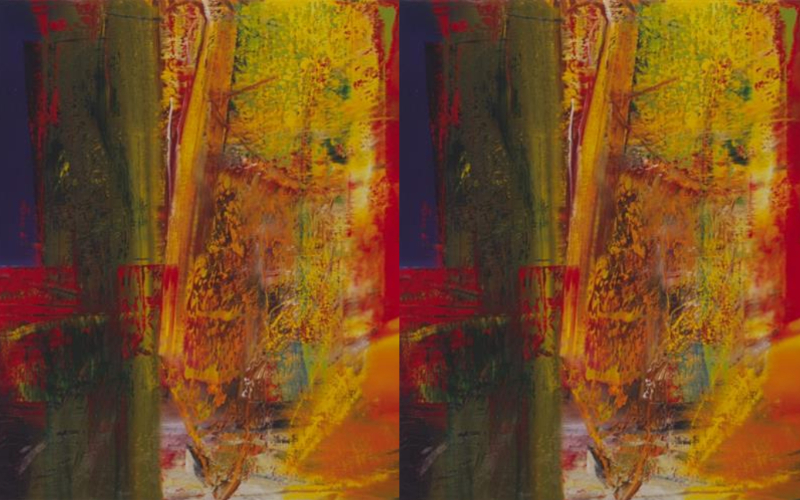The mature abstract design of Richter can be seen in Oelberg (1986).
The most notable development in his abstract paintings from the 1980s was the adoption of a plastic spatula as an additional instrument for applying paint and creating unique painterly effects.
The longest of Richter’s spatulas, which was three meters long and had the ability to mimic the effects of large paintbrushes, came in a variety of sizes. In addition, he employed squeegees, palette knives, wooden utensils, and other brushes.
We must understand how paintings like Oelberg are made in order to comprehend the evolution of Richter’s abstract style.
Such paintings were created by the artist using several coats of paint. Richter worked on fusing these layers into engaging paintings during the 1980s. Richter initially stretched the large canvas out on the ground and painted it with diluted yellow, orange, red, green, and blue hues.
This first layer served as a foundation for using the spatula. Many times, the geometric shapes on this layer were covered up in the finished artwork. Richter frequently left portions of the underlayers visible, typically around the canvas’ edges.
The blue rectangle in the top left corner of the canvas and the yellow, pink, and green at the bottom edge of Oelberg’s painting both reveal the underlayer.
Following that, Richter would hang the painting on the wall and use the spatula to apply the second layer.
Using the spatula, the top layers were applied, beginning at the top and descending downward to mimic the appearance of broad downward brushstrokes.
Richter used the spatula’s edge, altering and varying the pressure to manage the color’s density and produce a variety of artistic effects.
For instance, the long, broad paint lines that span the surface were created by slowly pushing on the thick paint.
For instance, the long, broad paint lines that span the surface were created by slowly pushing on the thick paint. Eventually, Richter probably used big brushes to paint the finishing touches on Oelberg.
Oelberg, the painting’s title, has several layers of significance. On a personal level, it has to do with the name of the street where Richter’s ex-wife, the artist Isa Genzken grandparents live (Richter and Genzken were together between 1982 and 1993).
The highest mountain in the Sieben Mountain range southeast of Bonn is also known by the name Oelberg.
It was also the Mount of Olives’ original name in the New Testament. Similar to the multi-layered artwork, Richter’s personal life, a natural setting, and a Biblical allusion can all be found in the title. The abstract image of Oelberg contains certain features of a landscape, as the title suggests.
Similar to this, Richter frequently used a blur effect to provide an abstract feel to his photo-paintings, as shown in Child on a Horse (1965). It captured the conflict between Richter’s paintings’ representational and abstract elements.
Up until 1988, Richter produced extensive abstract works a la Oelberg before returning to representational painting with the creation of the 18 Oktober 1977 series.


